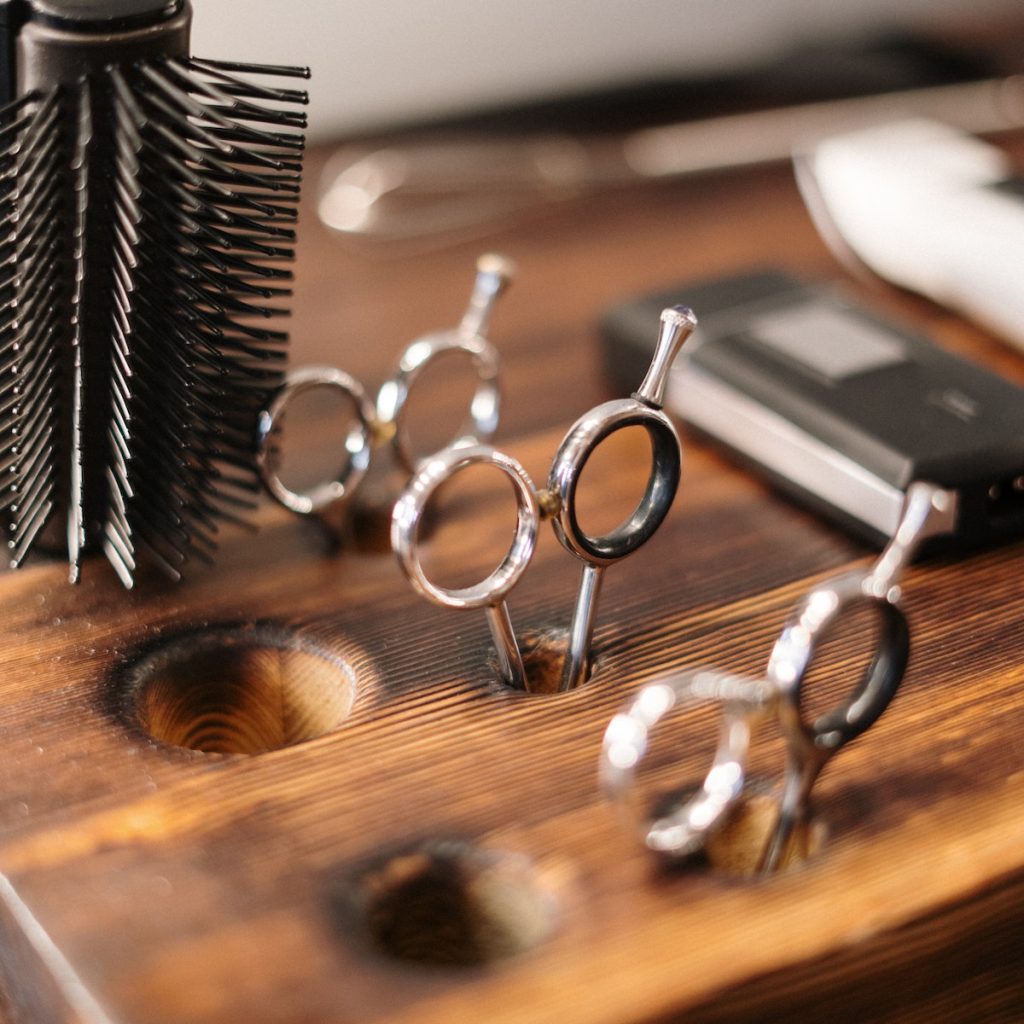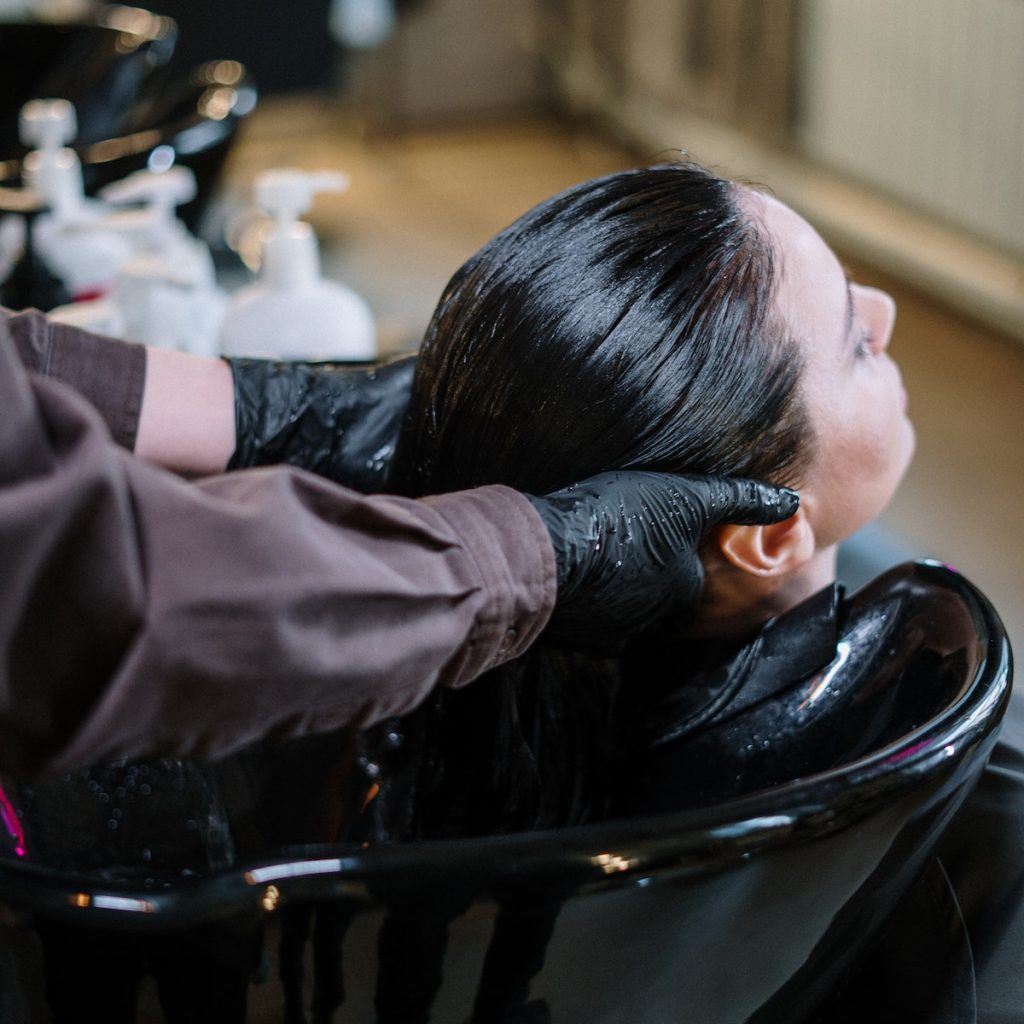Discover the essential guidelines for trimming chemically straightened or permed hair.
Guidelines for Trimming Hair That Has Been Chemically Straightened or Permed
Are you ready to give your chemically treated hair the trim it deserves? Whether you’ve opted for sleek and straight or bouncy and curly locks, it’s important to follow some guidelines to keep your mane looking fabulous. In this article, we’ll dive into the world of chemically treated hair and explore the best techniques for trimming both straightened and permed locks. So grab your favorite scissors and let’s get started!

Understanding Chemically Treated Hair
Before we jump into the trimming process, let’s take a moment to understand what chemical hair treatments are all about. Chemically treated hair is a fascinating subject that involves various processes and techniques to transform the natural state of your locks. These treatments can be categorized into two main types: chemically straightened hair and hair perms.
Chemically straightened hair, as the name suggests, involves the use of specific chemicals to alter the structure of your hair, making it straight and more manageable. This process is often achieved through the use of relaxers or keratin treatments. Relaxers work by breaking down the protein bonds in your hair, allowing it to become more flexible and straight. Keratin treatments, on the other hand, involve the application of a protein-rich formula that coats the hair shaft, resulting in smoother and straighter locks. Both of these methods can be quite effective in achieving a sleek and straight hairstyle.
However, it’s important to note that chemically straightening your hair can be harsh on your locks. The chemicals used in these treatments can strip the hair of its natural moisture and weaken its structure. Therefore, proper care and maintenance are essential to keep your chemically treated hair healthy and vibrant. Regular deep conditioning treatments, minimal heat styling, and the use of specialized hair care products are some of the steps you can take to ensure the longevity and health of your chemically straightened hair.
What is a Hair Perm?
On the flip side, a hair perm involves a different approach to chemically treated hair. Instead of straightening the hair, a perm focuses on creating beautiful waves or curls. This process is achieved through the use of chemical solutions and rods. The chemical solution is applied to the hair, which breaks down the disulfide bonds in the hair shaft. Once the bonds are broken, the hair is wrapped around rods of various sizes to create the desired curl pattern. The hair is then rinsed, and a neutralizer is applied to reform the broken bonds, locking in the new shape.
Hair perms are a popular choice for those who want to add some bounce and texture to their locks. Whether you desire loose beachy waves or tight spiral curls, a hair perm can help you achieve the look you desire. However, it’s important to note that the perm process can be quite intense on your hair. The chemicals used can cause some damage, and the hair may require extra care and attention to maintain its health and shape. Regular deep conditioning treatments, avoiding excessive heat styling, and using products specifically designed for permed hair are essential steps in keeping your curls looking their best.
Preparing for the Trim
Now that you’re familiar with chemically treated hair, let’s prepare for that much-needed trim. Proper preparation is key to achieving the best results, so let’s go over a few important steps.
Assessing Hair Health
Before picking up those scissors, it’s crucial to assess the health of your chemically treated hair. Look out for any signs of damage, such as split ends or dryness. If you notice these issues, it’s wise to address them before proceeding with the trim. This can involve deep conditioning treatments or using specialized hair repair products.
Deep conditioning treatments are designed to penetrate the hair shaft and provide intense hydration. They can help restore moisture to dry and damaged hair, making it more manageable and less prone to breakage. Look for products that contain nourishing ingredients like argan oil, shea butter, or keratin, as these can help repair and strengthen chemically treated hair.
Additionally, using specialized hair repair products can target specific concerns, such as split ends or breakage. These products often contain ingredients like amino acids, vitamins, and proteins that help fortify the hair shaft, reducing the appearance of damage and promoting healthier-looking hair.
Gathering Necessary Tools
Now that your hair is healthy and ready, let’s gather all the required tools for the trimming process. You’ll need a pair of sharp salon-quality scissors, a fine-toothed comb, and hair clips to section off your hair. Remember, investing in the right tools will make a world of difference in achieving a professional-looking trim.
When it comes to scissors, opt for a pair specifically designed for cutting hair. These scissors have sharp blades that ensure clean and precise cuts, minimizing the risk of fraying or damaging the hair. Avoid using regular household scissors, as they may not be sharp enough and can result in uneven or jagged ends.
A fine-toothed comb is essential for detangling the hair and creating clean sections for trimming. Look for a comb with closely spaced teeth, as this will help in achieving precise and even sections. Additionally, hair clips are necessary for securing the sections of hair you’re not working on, allowing for better control and visibility during the trimming process.
By using the right tools, you’ll be able to execute the trim with confidence and precision, ensuring that your chemically treated hair looks its best.
Techniques for Trimming Chemically Straightened Hair
Ready to trim those sleek strands? Let’s explore the best techniques for maintaining chemically straightened hair.
Chemically straightened hair requires special care to keep it looking fresh and healthy. Regular trims are essential to prevent split ends and breakage. In this guide, we will walk you through the step-by-step process of trimming your chemically straightened hair.
When to Trim Straightened Hair
Trimming chemically straightened hair is a delicate process that requires attention to timing. Aim to trim your locks every 8-12 weeks to maintain their health and appearance. By following this schedule, you’ll keep split ends at bay and prevent breakage, ensuring your hair stays sleek and beautiful.
Step-by-Step Guide to Trimming
Now, let’s dive into the step-by-step process of trimming chemically straightened hair:
- Start by washing and conditioning your hair using products specially formulated for chemically treated hair. This step is crucial as it prepares your hair for trimming by making it soft and manageable.
- Section off your hair into smaller, manageable sections using clips. This will make it easier for you to work through your hair and ensure that you don’t miss any areas.
- Take one section of hair and comb through it gently to remove any tangles. This step is important as it allows you to see the true length of your hair and identify any damaged or split ends.
- Using your scissors, trim off any damaged or split ends. Remember to take only a small amount off at a time to maintain the desired length. It’s better to trim gradually than to cut off too much and regret it later.
- Repeat the process with each section until you’ve trimmed all your hair. Take your time and be thorough to ensure that every strand gets the attention it needs.
- Once you’re done, give your hair a final comb-through to ensure all the sections are even. This step will help you achieve a polished and professional look.
Trimming your chemically straightened hair is an important part of your hair care routine. It not only keeps your hair looking its best but also promotes overall hair health. By following these steps, you can maintain your sleek and straight locks with ease.
So go ahead, grab your scissors, and give your chemically straightened hair the trim it deserves. Your hair will thank you for it!
Techniques for Trimming Permed Hair
If you’re rocking beautiful curls or waves, it’s important to master the art of trimming permed hair. Let’s explore the best techniques to keep your curls intact.
When to Trim Permed Hair
Just like chemically straightened hair, permed hair benefits from regular trims. Aim to trim your curls every 6-8 weeks to maintain their shape and prevent frizz. Trimming often will allow your curls to bounce back in all their glory.
Step-by-Step Guide to Trimming
Now, let’s discover the step-by-step process of trimming permed hair:
- Start by wetting your hair, as damp hair is easier to manipulate and trim.
- Section off your hair into smaller portions using clips.
- Gently comb through one section to detangle your curls.
- Hold a small section of your hair between your fingers and twist it slightly. This will create tension and allow you to trim the desired amount easily.
- Using sharp scissors, trim off any split ends or damaged curls along the twisted section.
- Continue twisting and trimming each section until you’ve worked your way through all the sections.
- Give your hair a final scrunch to release the twists and admire your beautifully trimmed curls.
Wow, your permed hair is now looking flawless with those fresh trims!
Post-Trim Care for Chemically Treated Hair
Now that you’ve mastered the art of trimming, it’s time to focus on post-trim care for your chemically treated hair. Let’s explore a few essential hair care products and routine maintenance tips to keep your locks looking their best.

Essential Hair Care Products
To maintain the health and longevity of your chemically treated hair, it’s important to invest in high-quality hair care products. Look for shampoos and conditioners specifically designed for chemically treated hair, as they will help restore moisture, prevent damage, and keep your locks looking fabulous.
Routine Maintenance Tips
In addition to using the right hair care products, adopting smart maintenance habits will help prolong the results of your trim. Consider the following tips:
- Avoid excessive heat styling, as it can further damage your chemically treated hair. If you must use heat, make sure to apply a heat protectant spray before styling.
- Protect your hair from harsh weather conditions and UV rays by wearing a hat or using protective sprays.
- Regularly moisturize and deep condition your hair to restore lost moisture and maintain its health.
- Avoid overwashing your hair, as this can strip it of its natural oils. Instead, opt for gentle cleansing routines and use dry shampoo between washes when needed.
- Consider scheduling regular trims to keep split ends at bay and prevent breakage.
By incorporating these tips into your hair care routine, you’ll be able to maintain those beautiful chemically treated locks and enjoy the results of your trim for longer.
Trimming chemically straightened or permed hair might seem intimidating at first, but with the right techniques and a playful attitude, you’ll master it in no time. By following these guidelines and embracing proper post-trim care, you’ll ensure that your chemically treated locks always look their best. So go ahead, grab those scissors, and unleash your inner hair stylist! Your fabulous tresses are waiting to be trimmed and flaunted!





